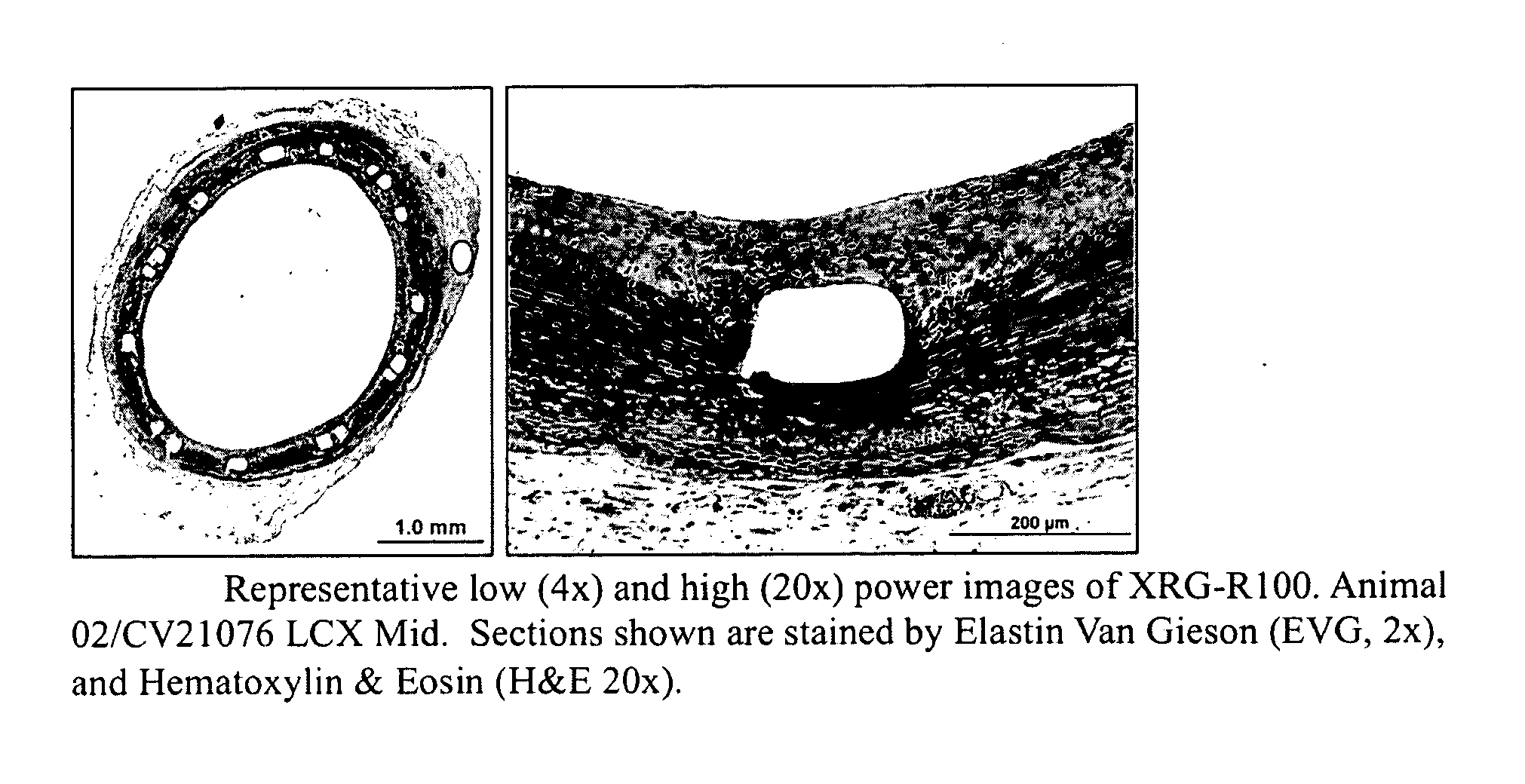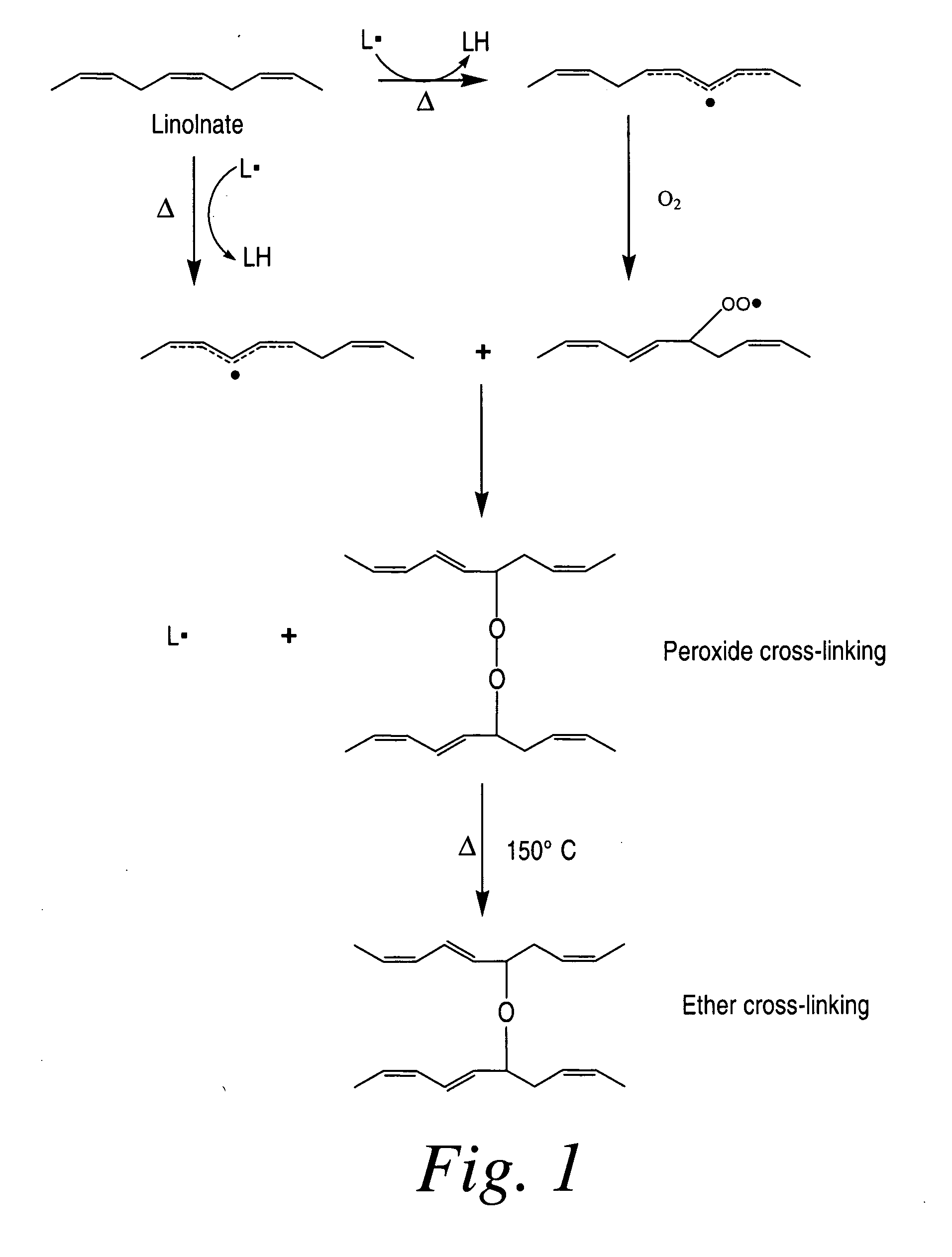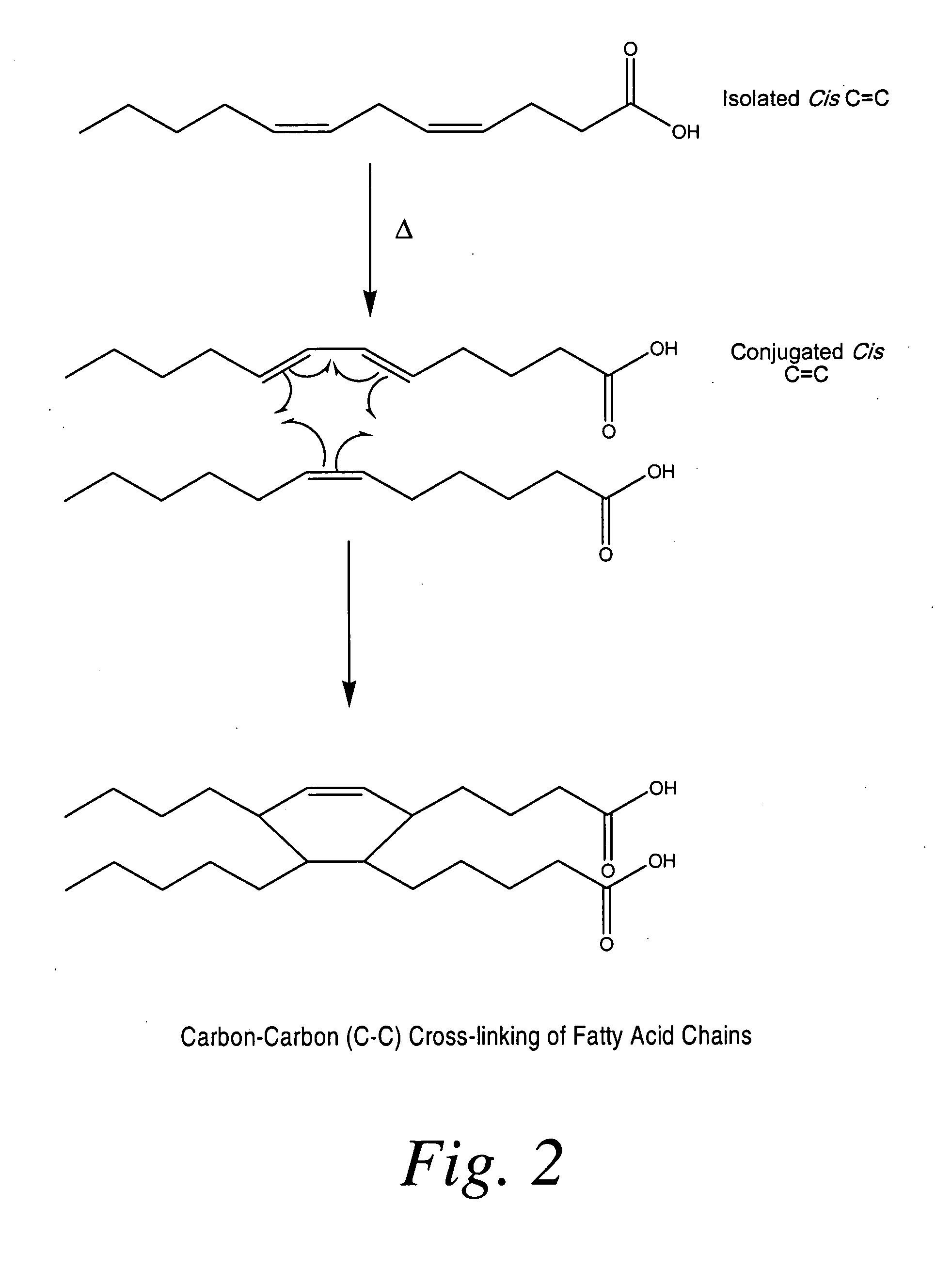Cross-linked fatty acid-based biomaterials
a technology of cross-linked fatty acids and biomaterials, which is applied in the direction of oil/fat/waxes non-active ingredients, packaging goods types, peptides/protein ingredients, etc., can solve the problems of re-narrowing of the vessel lumen, no known mechanical suppression means have been found to prevent or suppress such cellular proliferation, and vascular injury
- Summary
- Abstract
- Description
- Claims
- Application Information
AI Technical Summary
Benefits of technology
Problems solved by technology
Method used
Image
Examples
example 1
Analysis of In-Vitro Hydrolysis Chemistry of a Novel Biomaterial Derived from Fish Oil in 0.1 M PBS Solution
[0195]In the following example, coated medical devices (e.g., a polypropylene mesh) were cured in a high airflow oven at 200° F. for 24 hours, after which the fish oil was converted into a cross-linked biomaterial gel coating encapsulating the polypropylene mesh by oxidation of the C═C bonds present in the fish oil resulting in the formation of oxidative byproducts (i.e., hydrocarbons, aldehydes, ketones, glycerides, fatty acids) while largely preserving the esters derived from the original oil triglycerides. Volatilization of the byproducts followed by the formation of ester and lactone cross-links result in the solidification of oil into a bioabsorbable hydrophobic cross-linked biomaterial. The ability for the coating to be slowly hydrolyzed was investigated using 0.1 M PBS solution. The PBS solution was analyzed using GC-FID fatty acid profile and GPC chromatographic measur...
example 2
Fatty Acid Based, Pre-Cure Derived Coatings Loaded with Therapeutics and Applied to Metallic Stents
[0197]In this particular embodiment of the present invention, the application of cured oil coatings loaded with a therapeutic and applied to a cardiac stent are presented. The flow diagram presenting the process to create a cured coating on a stent loaded with a therapeutic is outlined in FIG. 13. Briefly, a pre-cured fish oil coating is created in a reaction vessel under agitation with heating in the presence of oxygen at 200° F. for 20 hours. The coating is mixed with the therapeutic of interest, and vitamin E with a solvent and then sprayed onto the stent to create a coating. The coating is annealed to the stent surface by heating at 200° F. for 7 hours to create a uniform coating. A coating with a model anti-inflammatory agent showed that this process allowed for 90% of the drug to be recovered after curing as determined using extraction of the drug from the device with HPLC analys...
example 3
Controlled Release of the Fatty Acid Based, Pre-Cure Derived Coating
[0198]Drug release was quantified for 3 batches of 16 mm stainless steel stents, coated with a Compound C drug coating formulation consisting of 60% Compound C, 30% pre-cured Fish Oil, 10% tocopherol Pre-cured fish oil was produced using fish oil, pre-cured at 93° C., to achieve a pre-cure viscosity of 1.3×105 cps as measured at 22° C. The coating was applied to surface of a 16 mm Atrium Flyer stainless steel stent by spraying to achieve an overall stent drug load of approximately 100 μg of Compound C per stent. The coated stents were subjected to a second thermal cure process whereby the coating was post-cured in an oven at 93° C. for a period of 7.5 hours. Dissolution was carried out in a 4 ml solution containing 0.01M purified buffered saline (PBS) at a temperature of 37° C.
[0199]An HPLC method was used to quantify drug dissolution in vitro of the Compound C drug coated stent. The drug release profile data is sho...
PUM
| Property | Measurement | Unit |
|---|---|---|
| Fraction | aaaaa | aaaaa |
| Fraction | aaaaa | aaaaa |
| Fraction | aaaaa | aaaaa |
Abstract
Description
Claims
Application Information
 Login to View More
Login to View More - R&D
- Intellectual Property
- Life Sciences
- Materials
- Tech Scout
- Unparalleled Data Quality
- Higher Quality Content
- 60% Fewer Hallucinations
Browse by: Latest US Patents, China's latest patents, Technical Efficacy Thesaurus, Application Domain, Technology Topic, Popular Technical Reports.
© 2025 PatSnap. All rights reserved.Legal|Privacy policy|Modern Slavery Act Transparency Statement|Sitemap|About US| Contact US: help@patsnap.com



